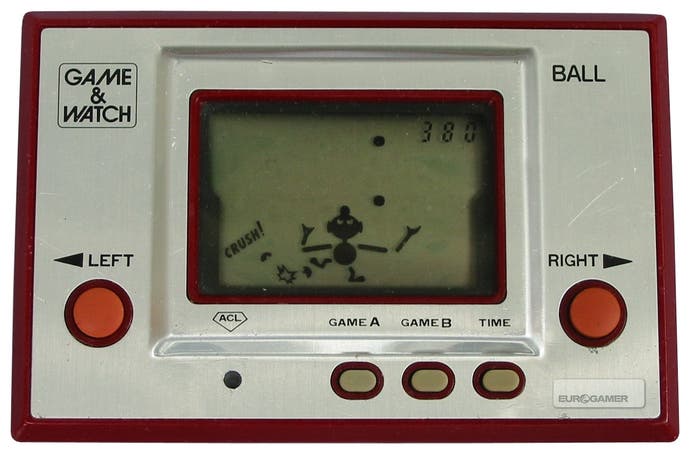Retrospective: Nintendo's Handheld Legacy
From Game & Watch to the DSi.
I got it all wrong at the time, but quite a lot of other people did too. Almost everyone who saw Sony's PSP prior to release assumed that it spelled the end for Nintendo's long domination of the handheld market.
Why wouldn't it? Sony had been on a roll for over a decade by this point, transforming consoles from things children played with before going to bed - at least in the popular imagination - into chic accessories professional clubbers, DJs, models and probably even sexy drug dealers wouldn't mind leaving lying around on the coffee table next to a copy of ID or the UTNE Reader.
The PSP was beautiful: it was exotic and smooth and shiny and it looked, in fact, like it had slipped through a wormhole and tumbled into the present day from some point in the future. Nintendo's handheld tech, on the other hand, always tended to resemble something that had just been decommissioned by a particularly unglamorous facet of the Russian military.
So, yes, I got it totally wrong: Rumours of the PSP's death have been greatly exaggerated, of course - it's still a nice machine with a growing library of decent titles - but the DS, meanwhile, is a phenomenon. It's a phenomenon in exactly the same way the Game Boy was so long ago, a phenomenon that reminds you that, when it comes to playing games on the bus, in the bath, or in the back of the car, Nintendo absolutely knows what it's doing.
And now, with the release in Japan of yet another DS variant - this one has slightly bigger screens, gang! - it seems as good a time as any to look back over the history of Nintendo's handheld legacy, to gather all of the company's portables together in one space, and reflect on a golden age for gamers and early-onset arthritis experts alike.
Game & Watch

Proof that all technology, no matter how mind-bendingly futuristic it initially seems, is inevitably going to end up on someone's keyring one day, Nintendo's Game & Watch series boldly leveraged LCD displays and a natty clamshell casing, to give children something to do while shivering outside on winter lunch breaks, before, of course, most UK schools sold all their playing fields off to private military contractors and industrial waste processing companies.
Created by Gunpei Yokoi, the stern-looking engineering yang to Miyamoto's grinning high-colour yin, Game & Watch was a series of portable one-shots Nintendo made between 1980 and the early nineties. Inspired, allegedly, by Yokoi watching a commuter stuck on a train screwing around with a pocket calculator because there was little else to do - Yokoi came very close to inventing books at this point, but that honour would go to Intellivision in 2003 - 46 titles were eventually made (full disclosure: this is what Wikipedia tells me) including outings for Mario, Zelda and Balloon Fight.
A word, here, about Gunpei Yokoi - a towering figure in handheld gaming, and easily the most influential designer in this field, having had a decisive hand in all of Nintendo's portable consoles up until his death in a car accident in 1997.
While Miyamoto will always be the most famous creative force at Nintendo, Yokoi, creator of the Metroid series, is a figure of equal stature and the company's handheld legacy is largely down to this one man. Even the consoles that came after his resignation and subsequent death bear his unique hallmark: a clever mixture of lowest-cost tech and smart ideas to distract players away from the obvious limitations. Word over.
Yokoi was yet to have his finest hour at the time he was working on Game & Watch, but the series represented an important first step for portable gaming and, often, a very generous one, if you took into account the relative low price of the unit, and the fact that most titles had A and B variations of the same game.
Some of us found the fiddly drabness of the LCD screen depressing, even back in the eighties when everything was depressing - but that's probably just because we couldn't afford them. Needless to say, there's a fairly buoyant collecting scene in operation for Game & Watch these days. Equally needless to say, I've yet to meet anyone who genuinely used the "& Watch" part at the time.

